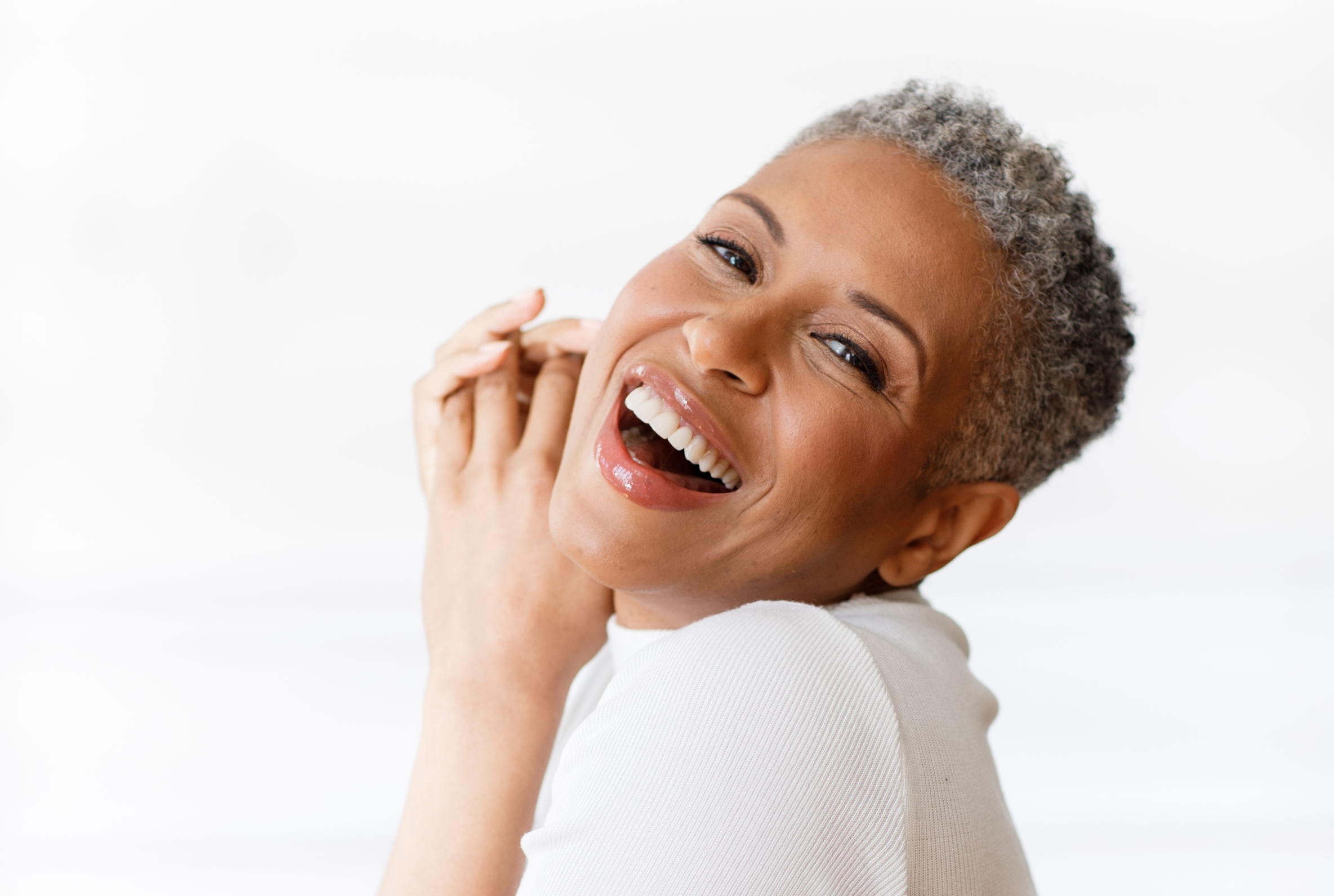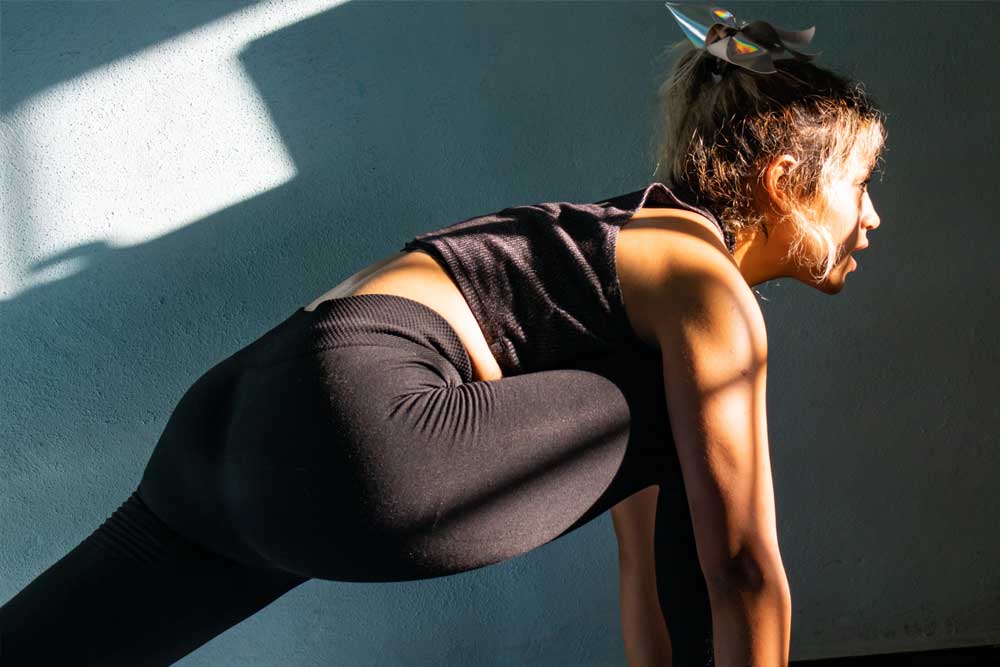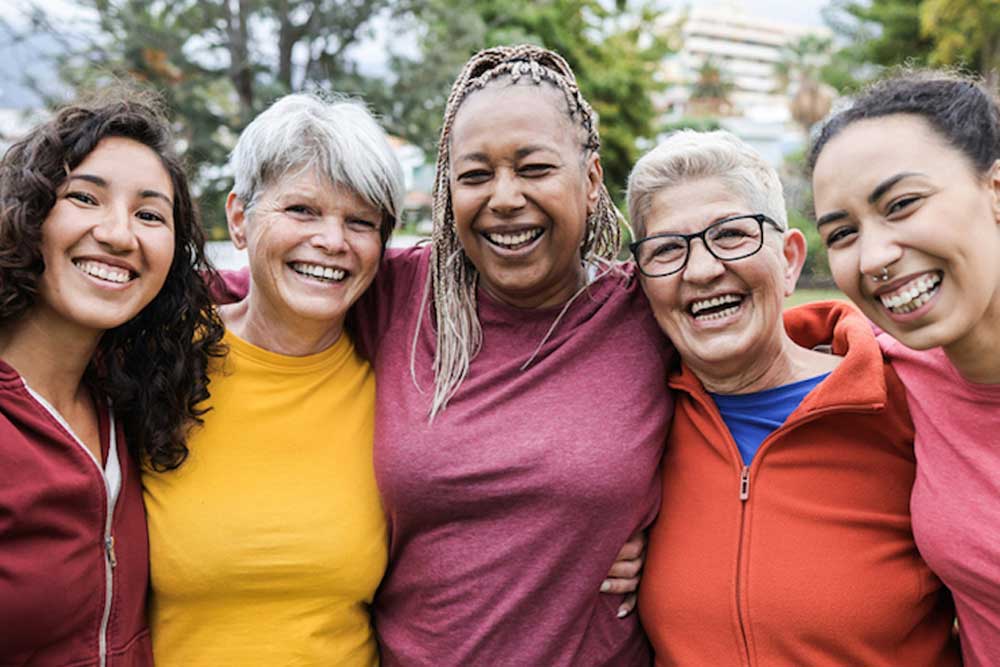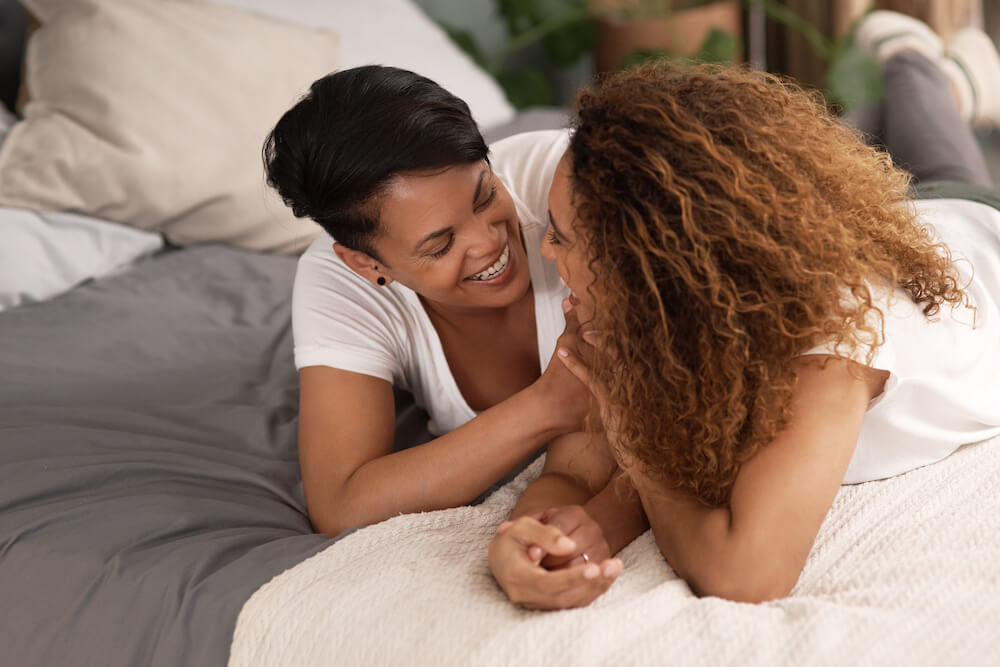Pilates for menopause can make your life easier if your pelvic floor muscles are not as strong as they once were. It’s pretty frustrating if you leak pee when you sneeze or have to style out panicky dashes to the loo not knowing if you are going to make it in time. If this is you, Pilates is a great way to strengthen your pelvic floor. Physiotherapist Amanda Savage is here with a complete guide to get you started so you can give the absorbent pads the heave-ho. Keep reading to find out everything you need to know about Pilates during menopause.
Find what you need quickly
- Lifestyle changes work for me
- What is Pilates?
- What happens during a Pilates class?
- Does menopause affect the pelvic floor?
- Is it too late to start doing Pilates to help with menopause?
- Training your muscles
- Best Pilates exercises for pelvic floor
- When can you expect to see results?
- What else can Pilates help with?
- Do you need any equipment to do Pilates?
- Final word
Lifestyle changes work for me
Even as a health professional I was a bit confused when my own perimenopause started. There wasn’t a hot flush in sight but my sleep became terribly disturbed. Fatigue (and grumpiness) quickly followed. I was using coffee to pick me up and wine to bring me down. It wasn’t me at all and didn’t seem like a good long-term strategy. My doctor agreed! HRT has hugely improved my sleep pattern, and (my family assures me) my mood.
Find out more about HRT risks and benefits.
I’ve also embraced healthier eating habits. Being only 5’1 there’s not much room to hide anything extra so I started tackling menopause weight gain early. Having been a committed carb-eater all my life, I now amaze myself by munching my way through a salad at lunchtime. The result is that I am not hungry or sleepy through the afternoon.
On reflection, and knowing the science, it’s likely that being an active person with a good diet is keeping the physical symptoms of menopause at bay. I do notice my mood is negatively affected when I have a holiday from my usual better habits – one of which is Pilates.
What is Pilates?
Pilates is a mind-body exercise developed by Joseph Pilates and based on the following principles:
- Breath
- Concentration
- Centring
- Control
- Precision
- Flow
I like my exercise disguised as something I actually enjoy doing – tennis, dancing or walking the dog. I especially like Pilates because although none of the individual tasks are super-challenging, I know I have given every bit of me due attention at the end of an hour. Having to concentrate on what I am doing keeps me from distraction and makes the time go quickly.
What happens during a Pilates class?
You will seriously concentrate on how you move. The precise and concentrated tasks improve your control and your coordination with your breath. You will be encouraged to focus on your abdominals and pelvic floor muscles through all the exercises.
There may be a few sit-up type moves but mostly Pilates cleverly uses your limbs as weights to create challenge for your abdominals and pelvic floor without the risks of pressure down into the pelvic region. You do need to listen to the instructor carefully about your technique. Mr Pilates was a stickler for technique!
Does menopause affect the pelvic floor?
Hormone changes in menopause bring about unique physical changes. The pelvic floor muscles depend on oestrogen for elasticity and to function well. With the onset of menopause you may experience an occasional leak when you cough or sneeze, have to frequently dash to the toilet or feel some heaviness in the vagina at the end of the day.
Read about whether or not it’s normal to leak or pee a lot during menopause.
How can Pilates help pelvic floor symptoms during menopause?
No muscle in our body works alone. The human body operates in complex movement patterns, mostly on auto-pilot. Pelvic health physiotherapists love the way that Pilates encourages the coordinated use of your breathing muscles (the diaphragm), your abdominals and your pelvic floor muscles – often referred to as your core. This coordinated movement is the way the pelvic floor muscles should work in everyday life.
Is it too late to start doing Pilates to help with menopause?
You can take up Pilates at any age – it is never too late. It is important to work at the right level for your ability though. Good teachers will want to know about your medical history, and assess which of their classes is the best fit for your starting level.
Training your muscles
If you have problems symptomatic of pelvic floor issues during menopause, you will need to start off with isolated, focused and targeted exercises. These train the brain to both contract and relax fully and on command. Try the classic squeeze and lift exercises three times a day to build up skills first. Find out more about them and the best pelvic floor exercises here. If you aren’t sure whether or not you are doing the exercises properly you should seek a full assessment and examination by a specialist physiotherapist.
Once you have a good awareness of your muscle position and activation technique you need to train your muscles to work on automatic pilot. They need to get on and be useful even when you are walking your dog, presenting in a meeting, or queueing at the tills with a full bladder! This is when we encourage patients to become Pilates pupils.
Best Pilates exercises for pelvic floor
- Spine curl
This controlled lift and lower uses the pelvic floor with the abdominals and breathing in a co-ordinated way. And it is delicious for loosening up your spine!
- Lie on your back with you knees bent
- Take a gentle breath in. Then, as you breathe out, draw in your pelvic floor and lower abdominals and use these core muscles to tilt your pelvis back into the mat, then away from the floor
- Keep breathing normally as you ‘peel’ your spine away from the floor, segment by segment. Use your abdominal muscles and bottom muscles (not your neck and shoulders) to keep the lifted position for 2-3 breaths
- Then, carefully lower your spine segment by segment back to the mat in reverse order. No plonking
- Watch this video to help with your spine curl technique
- Knee fold
- Lie on your back with you knees bent
- Find your ‘neutral’ spine – not squashed into the mat 80s style, nor arched away
- Draw in your abdominals and core muscles towards the floor
- Now imagine balancing a glass of water on your tummy
- Keep the imaginary water absolutely still as you fold one knee up, over your hip
- Then slowly put that foot back down where it came from, and without letting the imaginary glass move, change feet
- Imagine climbing a giant set of stairs – you need to move from one leg to the other keeping good abdominal and pelvic floor control
- You can watch this video for guidance on how to do the knee fold exercise
Challenge yourself with a double knee fold
When single leg folds become easy, increase the challenge by first bringing one leg up, keeping it there, and then bringing the second leg up. This is surprisingly much harder! Any sign of abdominal pooching, go back to single knee folds a bit longer.
- Clam
- Lie on your side with your knees bent and a little tucked back
- Practise holding your lower abdominals and pelvic floor in a steady position while you breathe, as if you have put on some tighter support pants
- When you can steadily hold the abdominals in position try to lift and low the top knee for 6 repetitions
- Keep the feet together and squeeze the heels. You should feel your bottom muscles lifting your knee up
- Keep holding the lower abdominals and core throughout the whole 6 repetitions
- Release and then repeat another 6 times
- Change sides
This video includes a few exercises including the clam.
- Arm opening
- Stay in the same position on your side
- Relax your legs and stretch both arms out in front of you
- Float the fingers of your top hand up to point to the ceiling
- Follow your fingers with your eyes as you let your hand stretch back behind you turning your head and chest as you go
- Enjoy a lovely stretch. Have a deep breath in. As you breathe out return your hands together in front of you
- Repeat 6 x each side
- Roll down (against a wall)
- Stand against a wall with your knees a little bent and your feet a good 20cm away from the skirting
- Take a breath in and as you breathe out connect to your lower abdominals and core.
- Hold them gently as you go on breathing
- Then let your chin tip towards your chest and allow your head to come away from the wall
- Keep slowly peeling away from the wall letting each segment of the spine join in one by one. Keep your bottom on the wall throughout
- When you reach your lowest point, enjoy stretching your shoulders, back and legs for a couple of breaths
- Then, when you are ready, slowly rebuild yourself back to the wall
- Let the abdominals drive the movement putting your back, waist, chest, shoulders and finally your head back on the wall
This video will help you with your technique – although you will be against a wall
When can you expect to see results?
Most women feel the benefit within a few sessions. Once you start looking after your body once a week you notice it if you stop. That’s why it can be so hard to find a place in a Pilates class – once people discover how good they feel from moving in this structured way they like to keep coming!
What else can Pilates help with?
Pilates can help women during perimenopause when all the cells of the body are affected by a change in hormones – joint pains, stiffness and weight gain being common complaints. Perimenopause often comes at a time when women are prioritising younger and older family members’ needs, neglecting their own wellbeing.
All the concentrating and thinking required is mindfulness in action. You can’t be distracted or you will miss what you’re supposed to be doing. The atmosphere is intentional, calm, and structured. Not as zen as yoga but not the frantic complexity of say Zumba or a HIIT class. Combined with the formal relaxation part at the end of a session you should float home. Most pupils will notice how much better they sleep after an evening class.
Do you need any equipment to do Pilates?
There are two types of Pilates classes both with different equipment required:
- Reformer or studio Pilates
- Matwork Pilates
Reformer or studio Pilates
In a specially designed Pilates studio you will find large equipment pieces including the Reformer bed, Cadillac chair and Barrel to name a few. These have pulleys and weights to push and pull in patterns. They can be adjusted from beginner to advanced ballet-dancer level.
Matwork Pilates
Matwork Pilates exercises were developed to make the Pilates method more accessible and less expensive. You will find these classes run in gyms and studios but also in local village halls. You can also learn this style from a book, DVD or YouTube.
For matwork Pilates you will only need a thick mat and a small head cushion for comfort. Most classic matwork Pilates exercises use your own body weight and limb movements to create the tasks and challenges. You can also add small equipment like hand weights, a soft ball or a resistance band to create variety and challenge.
How do you know if you’re doing the exercises correctly?
Teachers who specialise in online teaching will try to give you as many tips, cues and signposts as possible to help you learn alone at home. However, to learn what Mr Pilates intended, ideally you do need an instructor. They can keep an eye on your technique and help you get the best results. Perhaps ask for a set of classes or a couple of 1:1 sessions for your next birthday?
Final word
Looking after yourself by taking on board the natural strategies of improving your nutrition, sleep, stress levels and movement patterns are all easy wins when it comes to managing menopause symptoms.
When it comes to Pilates, you only have to start with one hour once a week. For the rest of the week your brain quietly continues those muscle and energy patterns in the background, week-on-week improving the quality of the way you move.





